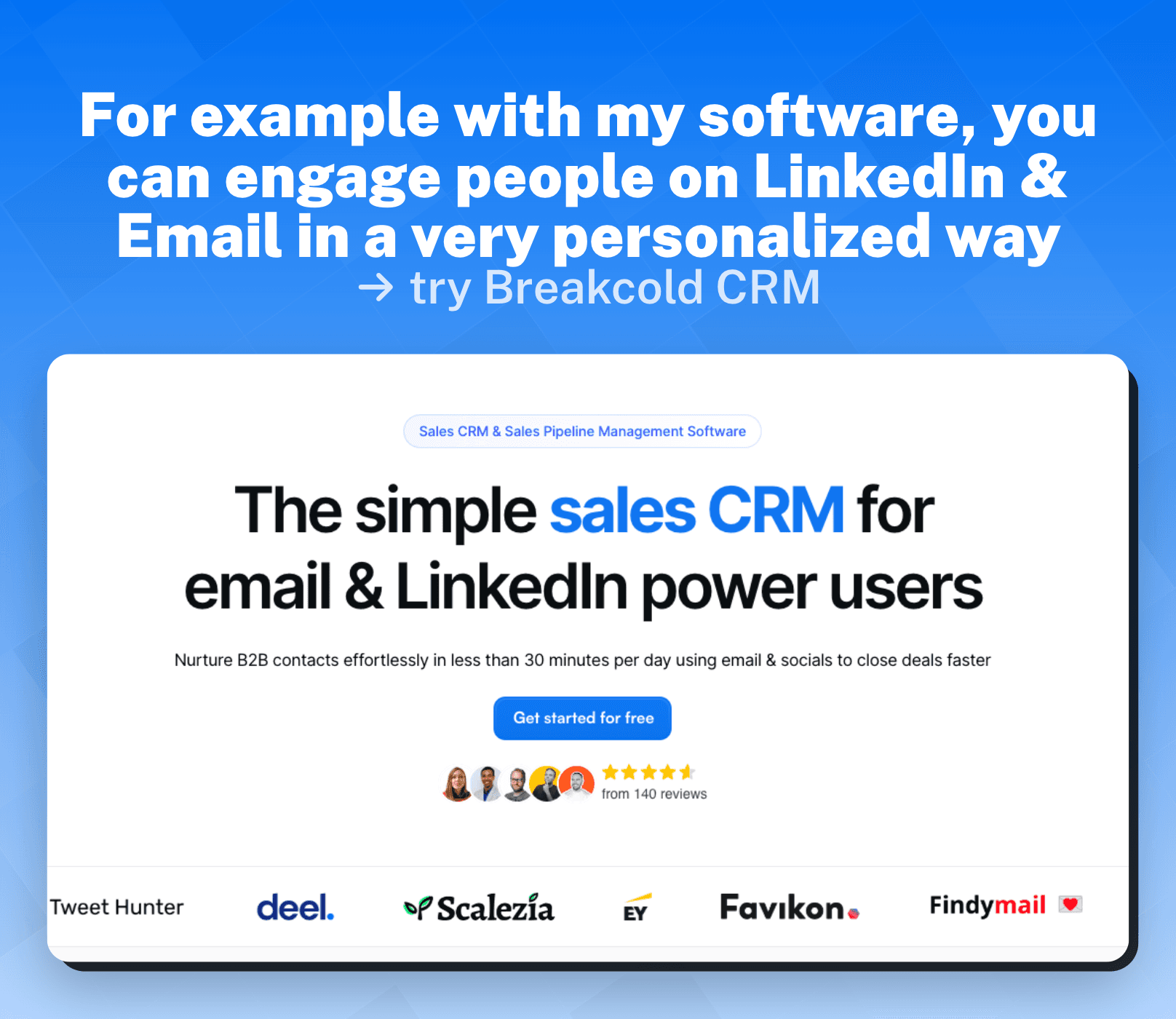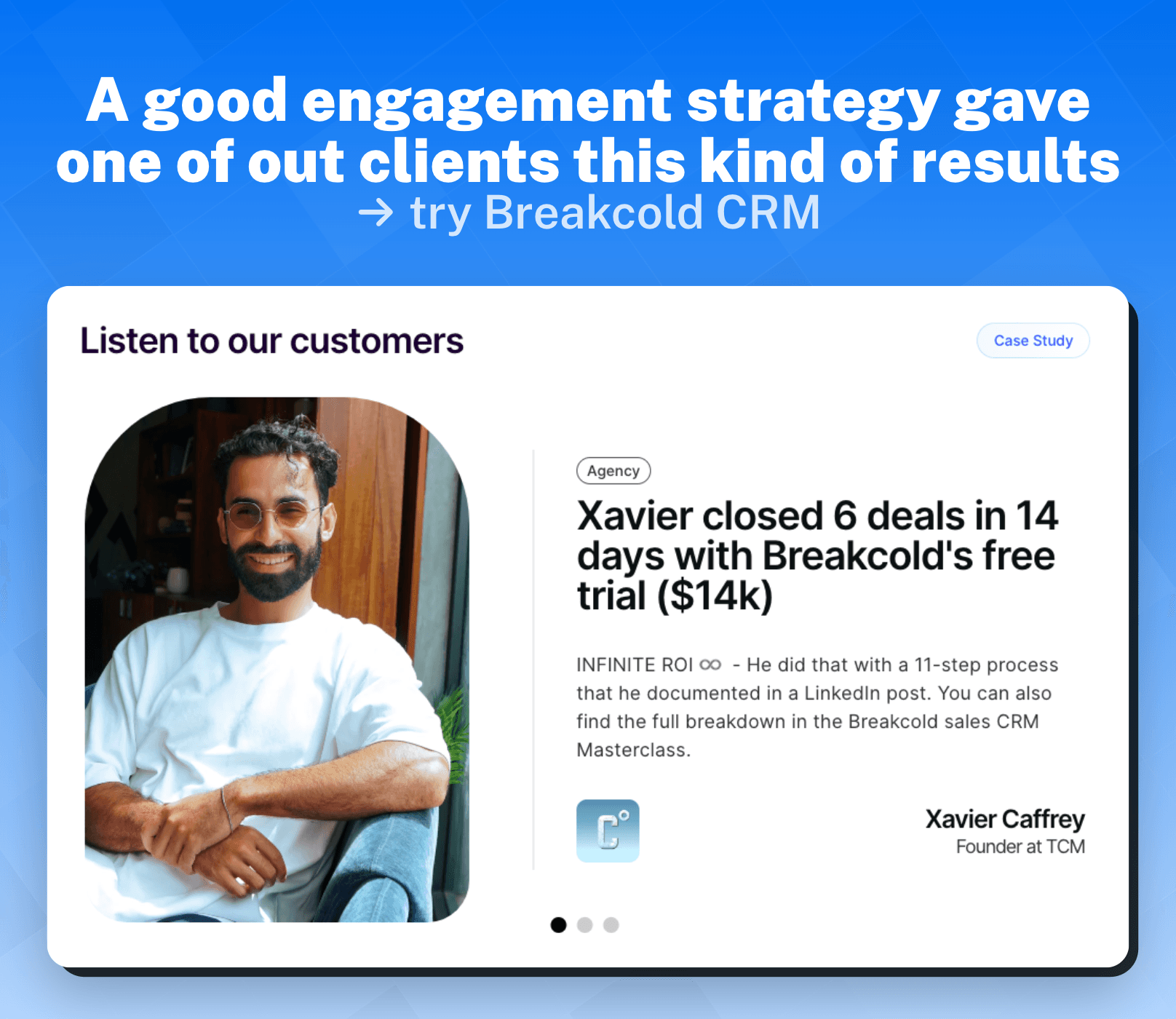1°) What is Engagement Strategy?
An engagement strategy refers to the plan and approach that an organization or business uses to attract and maintain the interest, involvement, and loyalty of its target audience or customers. It involves creating meaningful and impactful interactions to build a strong relationship with the intended recipients.

Engagement strategies are crucial in today's competitive business landscape. With the rise of social media and digital marketing, businesses need to go beyond traditional advertising methods to connect with their audience. By implementing a well-defined engagement strategy, companies can establish a two-way communication channel, allowing them to understand their customers' needs and preferences better.
1.1 - Definition of Engagement Strategy
An engagement strategy is a carefully crafted plan that outlines the specific tactics and activities to be implemented in order to effectively engage with the target audience. It involves understanding the needs, preferences, and behaviors of the audience to create tailored experiences that resonate with them.

Developing an engagement strategy starts with thorough market research and audience analysis. By gathering data on demographics, psychographics, and consumer behavior, businesses can gain insights into what motivates their target audience. This information serves as the foundation for creating engaging content and experiences that capture their attention and keep them coming back for more.

Furthermore, an engagement strategy goes beyond just attracting new customers. It also focuses on nurturing existing relationships and fostering customer loyalty. By continuously engaging with customers, businesses can build trust and loyalty, which often leads to repeat purchases and positive word-of-mouth recommendations.
1.2 - Advantages of Engagement Strategy

Implementing an effective engagement strategy offers several advantages for businesses:
Increased brand loyalty: By consistently engaging with the audience and providing value, businesses can build trust and loyalty, making customers more likely to choose their brand over competitors. A loyal customer base not only leads to repeat business but also serves as a powerful marketing asset through positive reviews and recommendations.
Better customer retention: Engaging customers on an ongoing basis helps to retain their interest and keeps them connected to the brand, reducing the likelihood of churn. By continuously providing valuable content, personalized experiences, and exceptional customer service, businesses can create a strong bond with their customers, making it harder for competitors to lure them away.
Enhanced customer experience: By personalizing interactions and ensuring relevance, businesses can deliver a superior customer experience, leading to higher levels of satisfaction. An engagement strategy allows companies to tailor their messaging, offers, and overall customer journey to meet the specific needs and preferences of their audience. This personalized approach creates a positive brand perception and fosters a deeper emotional connection.
Improved customer advocacy: Engaging customers can turn them into brand advocates, who promote the business and its products/services to others, thereby driving organic growth. When customers have a positive experience and feel engaged with a brand, they are more likely to share their satisfaction with others, whether through word-of-mouth, social media, or online reviews. This organic advocacy can significantly expand a company's reach and attract new customers.
1.3 - Disadvantages of Engagement Strategy
While engagement strategies offer numerous benefits, it's important to be aware of potential drawbacks:
Time and resource-intensive: Implementing an engagement strategy requires significant investments in terms of time, effort, and resources. It involves creating and curating engaging content, managing social media platforms, analyzing data, and continuously adapting strategies based on customer feedback. Businesses need to allocate sufficient resources and manpower to execute an effective engagement strategy successfully.
Complexity: Developing and executing an effective engagement strategy can be challenging, especially when dealing with diverse audience segments. Different customer groups may have varying preferences, behaviors, and communication channels. Businesses need to invest in market research and data analysis to understand these nuances and tailor their engagement efforts accordingly. This complexity requires a strategic approach and ongoing evaluation to ensure optimal results.
Potential backlash: In some cases, engagement efforts may not be well-received by the audience, leading to negative feedback or even brand damage if not handled carefully. Businesses need to be mindful of cultural sensitivities, ethical considerations, and potential controversies when implementing engagement strategies. It's crucial to monitor and respond to customer feedback promptly, addressing any concerns or issues that may arise.
2°) Examples of Engagement Strategy
Let's explore some real-life examples of how engagement strategies have been successfully implemented in different contexts:
2.1 - Example in a Startup Context
In a startup context, one effective engagement strategy is to involve customers in the product development process. By seeking their feedback, incorporating their ideas, and communicating the progress transparently, startups can create a sense of ownership and inclusion, fostering strong customer loyalty even in the early stages.
For instance, imagine a startup that develops a mobile application for fitness tracking. To engage their customers, they could create a dedicated online community where users can provide feedback, suggest new features, and participate in beta testing. This approach not only empowers the customers but also allows the startup to gather valuable insights and improve the product based on real user experiences.
2.2 - Example in a Consulting Context
A consulting firm can implement an engagement strategy by hosting webinars or workshops where experts share valuable insights on industry trends and challenges. This not only helps position the firm as a thought leader but also allows for interactive discussions, enabling participants to engage with the consultants and each other.
For example, let's consider a consulting firm specializing in sustainability. They could organize a webinar series where they invite industry experts to discuss topics like renewable energy, waste management, and corporate social responsibility. By encouraging participants to ask questions and share their own experiences, the firm creates a platform for meaningful engagement and knowledge exchange.
2.3 - Example in a Digital Marketing Agency Context
A digital marketing agency can engage its clients by providing regular performance reports and conducting data-driven reviews. This approach ensures transparency, fosters trust, and allows clients to actively participate in optimizing their marketing campaigns based on the insights provided.
For instance, consider a digital marketing agency working with an e-commerce business. They could provide their client with detailed reports from a website traffic checker, conversion rates, and customer demographics. By using white label SEO report, the agency delivers insights that both the client and agency can review together to identify areas for improvement, develop targeted marketing strategies, and track the impact of their efforts over time.
2.4 - Example with Analogies
To further illustrate the concept of engagement strategy, let's consider an analogy. Just like a successful marriage requires continuous effort, attention, and meaningful interactions between partners to thrive, a business must engage with its audience consistently to build and maintain a strong relationship. Failure to do so can result in disinterest, detachment, and ultimately, the loss of customers.
Imagine a couple who starts off their relationship with frequent dates, open communication, and shared experiences. As time goes on, however, they become complacent and stop putting effort into the relationship. They no longer engage in meaningful conversations, neglect each other's needs, and take each other for granted. Eventually, their connection weakens, and they drift apart.
Similarly, a business that fails to engage with its audience may experience a decline in customer interest and loyalty. Without ongoing communication, personalized experiences, and efforts to meet customer needs, the business risks becoming irrelevant and losing its customer base to competitors.
In conclusion, an effective engagement strategy is an essential component for businesses aiming to cultivate meaningful connections with their target audience. By understanding the advantages, considering the disadvantages, and drawing inspiration from successful examples across various contexts, businesses can create engaging experiences that drive loyalty, retention, and growth.












































































































































































































